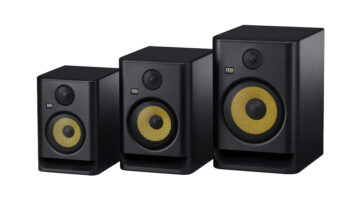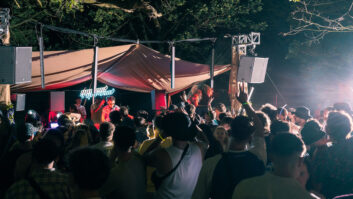
Rob Tavaglione
It’s easy to get frustrated when dealing with poor tracks whilst wearing our “mix engineer” hats. Unwanted noise, hum, buzz, clicks, level inconsistencies, bad punches, awkward edits, polarity reversals, poor timing, inappropriate tone, lifeless performances…. There’s a lot of ways bad tracking can ruin a mixer’s day, or at least slow it way down.
If an ounce of prevention is preferred over a pound of cure, then it begs the question, “How do we prevent tracking sessions from going bad?” Or, more specifically, where should we engineers focus our proactivity to achieve the expected results?
Here’s my advice on the top five tracking solutions and ways to apply them. If some of this seems old hat to you veterans, let me remind them that “fix it in the mix” is more popular than ever and proper tracking is often the Achilles heel of many an otherwise effective personal/re-purposed studio.
Help the performer: Happy performers lay better tracks, plain and simple. The single best way to make your mic and signal-chain choices appear ideal is via great performances which sort of “trivialize” the importance of signal chain. If you can create the perfect recording environment, your reward is often time saved, better quality achieved and a better vibe, as performers are keen on personal attention and a little TLC.
Obviously, a great cue mix is the ideal place to start, so make sure it’s clean; has headroom; is stereo (mono cues are okay, but especially singers like wide mixes with their dominant vocal front and centered); and quickly re-balance-able and monitor-able by you so YOU can “hear what the performer hears” in the event of trouble. Don’t forget to have a “no cans” option (cutting in the control-room, or using playback monitors in the studio) available, which can really reduce fatigue.
Confidence boosters for the less than virtuoso are usually welcome, so kindly remind troubled performers that it’s easy to punch-in, or comp takes, or edit and quantize these days, so there’s no burden of top-to-tail perfect takes. For that matter, offer to sub-divide performances like intricate guitar or keyboard parts (that have multiple voices within a melody) into multiple takes; sometimes such slick methodology can really make a melody “zing” as well as assist the struggling. Sometimes simply dividing a song into sections does the trick. And what about rhythm correction edits and quantizing? I’d say the occasional “sticking it on the one” is okay to edit, but I wouldn’t quantize unless you’ve got producer pre-approval.
Don’t forget the good ol’ “here, try this house instrument” as a properly maintained guitar/bass/keys will likely outperform a road-worn or crappy instrument, or get a player who is “stuck in their own head” out of the rut, to mix a couple metaphors.
Fix the room: As a lifelong student of room tuning, I can attest that achieving wonderful and recordable sonics ain’t easy, but then again improving (or at least mitigating) room problems is always worth the effort. If space allows, try to have multiple tracking areas with discernibly different sonics (or variables like slide-able curtains) and utilize the variety of options created. A nice fleet of gobos is always helpful; have some big ones to make iso boxes and “huts,” or medium sized ones, to shield sound yet allow sight lines and small ones to block direct lines, but selectively allow leakage.
Sometimes re-purposed rooms are choked off, overly treated and translate too darkly. Portable reflective surfaces—the backsides of your gobos, or hardwood panels, or even tile—can introduce a little more excitement especially with instruments like congas, cajons, acoustic instruments and hand percussion.
Use the right transducer: If the room still isn’t sounding right, try grabbing it with new ears, or switching mics to be specific. Maybe it’s the off-axis stuff sounding harsh or irritating? Try an omni pattern and closer placement. Leakage ruining your ideal placement? Try using a ribbon mic and getting that leakage in one of the ribbon’s deep side nulls (much more profound than off-axis with a cardioid). They can be finicky, but don’t forget hyper- or super-cardioid polar patterns to ignore the reflections and focus on the source.
If that room sound is still bothering you, or you’re unsure of that mic choice, or you like virtual amping (or re-amping)—or you just want to have your ass covered—grab a DI too. I know, DIs are sometimes less than impressive, but think of it as an audio insurance policy appreciated by all mixers (whether they use them in the final mix or not).
Signal process: Don’t be afraid to create a sound that actually sounds great, even if aided by a little signal massaging. Unless pre-approved, don’t add anything in the time/modulation domain to your tracks. So, reverbs, delays, modulations, choruses, flanges are all verboten. For that matter, avoid anything destructive and hard to undo—so, no noise gating, downward expansion, noise removal or any encoding that requires later decoding.
Maybe a little EQ is needed? If you can contain yourself to that one judicious and clarifying mid-dip, then dip away, and who could blame you. Maybe a nice Baxandall top-shelf to sweeten up that ribbon? Anemic bottom end? A moderate shelving (or bell) boost coupled with a conservative HPF is okay. If you’re thinking of huge 15 dB boost/cuts, combos of numerous boosts and cuts, deep resonance-removing notches, or tampering with hyper-sensitive areas like around one kHz … just DON’T. Leave such debatable and potentially phase-damaging moves to the mix engineer.
Some compression is definitely advised, especially if you’re talking about sources that are likely to need more dynamic attenuation in the mix. Bass guitar, vocals, anything that’s a little too jumpy in level are candidates for some containment on the way in. Just remember to leave some dynamics intact (for the mix engineer to utilize), avoid overly quick attack times that suck the life out and watch release times, too (too fast and you’ll create distortion; too slow and you’ll lose power/excitement). FET comps are often the most reactive and hard to “hear,” whereas electro optical are frequently more euphonic (laden with more character, refinement and audibility). If you have created a beautifully hairy beast of very stylized signal, just print a version in bypass, too, so the mixer can go in parallel easily, or dump your tone and find their own.
Multi-band process: You’ve comforted the performer, found just the right spot in the room, selected the ideal mic (mic, mics and/or DI), applied some beneficial signal processing and you’ve still got a track that you’re pretty sure will not sit nicely in a mix. What now? There’s not much left in your arsenal that you should be pursuing, lest we engage in mix practices and not tracking practices.
Once a tool for only the bold and the deep-pocketed, multi-band dynamics processing has become much more commonplace and affordable as of late. A dynamic EQ divides the frequency spectrum using typical EQ filters, whereas a multi-band compressor uses crossover-type filters, but both can smooth out uneven performances and mitigate troubled moments without compromising the entire track. Use low ratios and carefully positioned thresholds to avoid any evidence you’ve gotten your hands this dirty. Think hippocratic, invisible and not tampered with.
If all of the above still leave you with underwhelming tracks and certain ridicule from a frustrated mix engineer, take a break and re-group. A “no-blame” group discussion might just find an unexpected (and likely very personalized) solution. Things like losing the click, switching to an easy song, or tracking less than the whole ensemble (e.g., drums, bass and scratch instrument only) can clear the room and introduce new energy. Or, maybe you’re the problem—check your own head! Maybe everyone needs a day off. Maybe fire the band, maybe take your chances supplying stems instead of tracks, or take a cue from that Mixerman saga and have the producer overdub all killer parts while the band is out partying.
But whatever you do, don’t give up easily. Even if we can “fix it in the mix,” we collectively need to aim a little higher. There’s honor, respect and personal growth that come along with pursuing excellence—and a lot more jobs in your future if you succeed.






